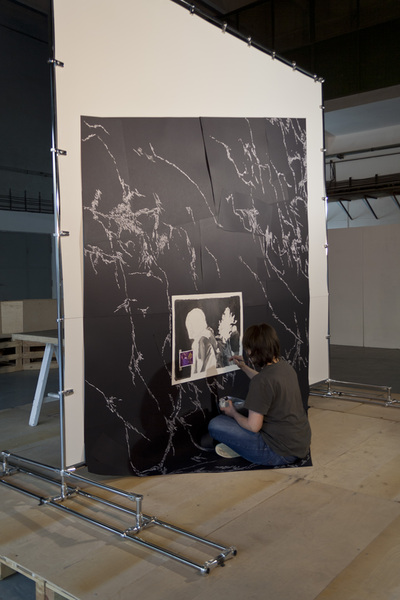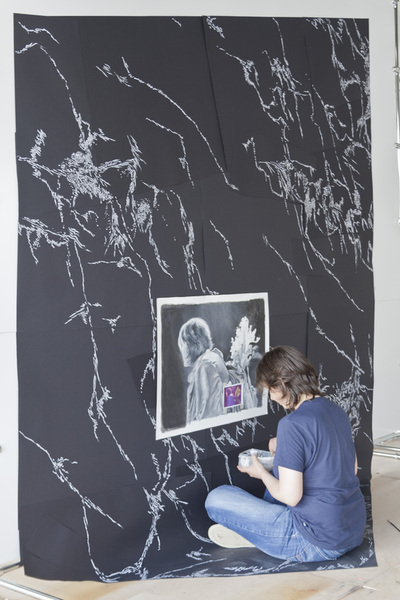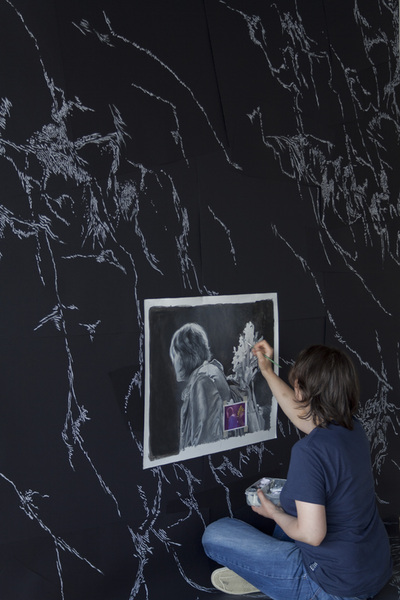|
INSTALLING THE IMAGE
by Ana Maria Micu interactive reenactment of the studio performance during irregular hours each day, May 20 - 23, 2014, Sala Tipografia, Bucharest a part of the succession of projects Shortsighted. Presbyopic. Blindfolded curated by Igor Mocanu at Allegra Nomad Gallery |
|
The space of the hall is turned into a rupturing forum by placing a wooden structure with a platform and benches for the visitors. The platform is cut into two symmetrical half-spaces that aim to re-stage two dimensions of the contemporary arts field: art which is accompanied by an explicatory discourse or with a shape owing to verbal conceptualization; and art with a non-verbal and primarily material discourse. On the one side are artists who, generically speaking, sit and paint on an easel, but they can practice any other classical form of art (sculpture, drawing, object installation, photography), on the other, artist who explain their works, conceptualising (performance, speech, dance, happening). On the one hand are visual arts, and of the other, performative arts. The audience is urged to assist and turn into an art critic and make critical judgements.
Ana Maria Micu reconstructs her studio environment as an optical illusion that creates an apparent frontal image from a scene viewed from the side. The public is invited to take photos from this angle, with a provided camera, leaving their names to identify themselves among the collective of authors. Installing the Image is slowly yet implacably self-generating. Ana Maria Micu is endorsing the image she is painting with an all-powerful authority over its ecosystem. The image is building itself along with its context, and the context is shaped through the evolutionary stages of the pictorial discourse. Working like this becomes a changing process towards an interpretative installationist gesture that can be exhibit only through reenactment. A reenactment of the entire studio willing to enter into a dialogue with the audience. A photo camera is reshaping the basic convention of this dialogue. The public can judge what he sees by looking through the camera and by choosing the preferred zoom and focus. A global interaction that can lead to relevant conclusions for the purpose of painting in itself.
Photographs Taken by Visitors













